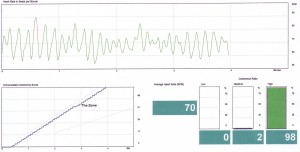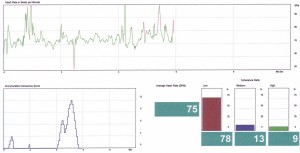 This study examined whether breathing rate affected self-reported pain and emotion following thermal pain stimuli in women with fibromyalgia and “healthy” control women. Pain intensity and unpleasantness were recorded immediately following each pain trial, and positive and negative affect were assessed at the end of each block of normal breathing and slow paced breathing.
This study examined whether breathing rate affected self-reported pain and emotion following thermal pain stimuli in women with fibromyalgia and “healthy” control women. Pain intensity and unpleasantness were recorded immediately following each pain trial, and positive and negative affect were assessed at the end of each block of normal breathing and slow paced breathing.
“Compared to normal breathing, slow breathing reduced ratings of pain intensity and unpleasantness, particularly for moderately versus mildly painful thermal stimuli. These experimental findings provide support for prior reports on the benefits of yogic breathing and mindful Zen meditation for pain and depressed affect.”
Controlled breathing is vital to regulating autonomic control, or one’s fight/fight stress response. The autonomic nervous system is where stress first manifests in the body because this is the tool the body uses to adapt to its environment. It’s for this reason I make a point of teaching clients where and how to breathe as well as measuring the responses in the autonomic nervous system with our heart rate variability equipment to see the effects chiropractic care is having. You can’t see it without measuring it. For those in chronic pain, the breathing aids too of course as the study suggests.
Below are two ECG examples recorded at Spinewave: One healthy autonomic nervous system, and one challenged, repetitively ill system.


